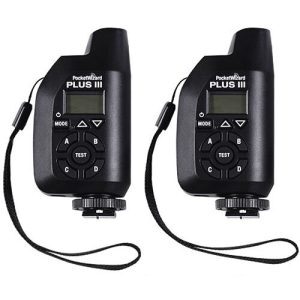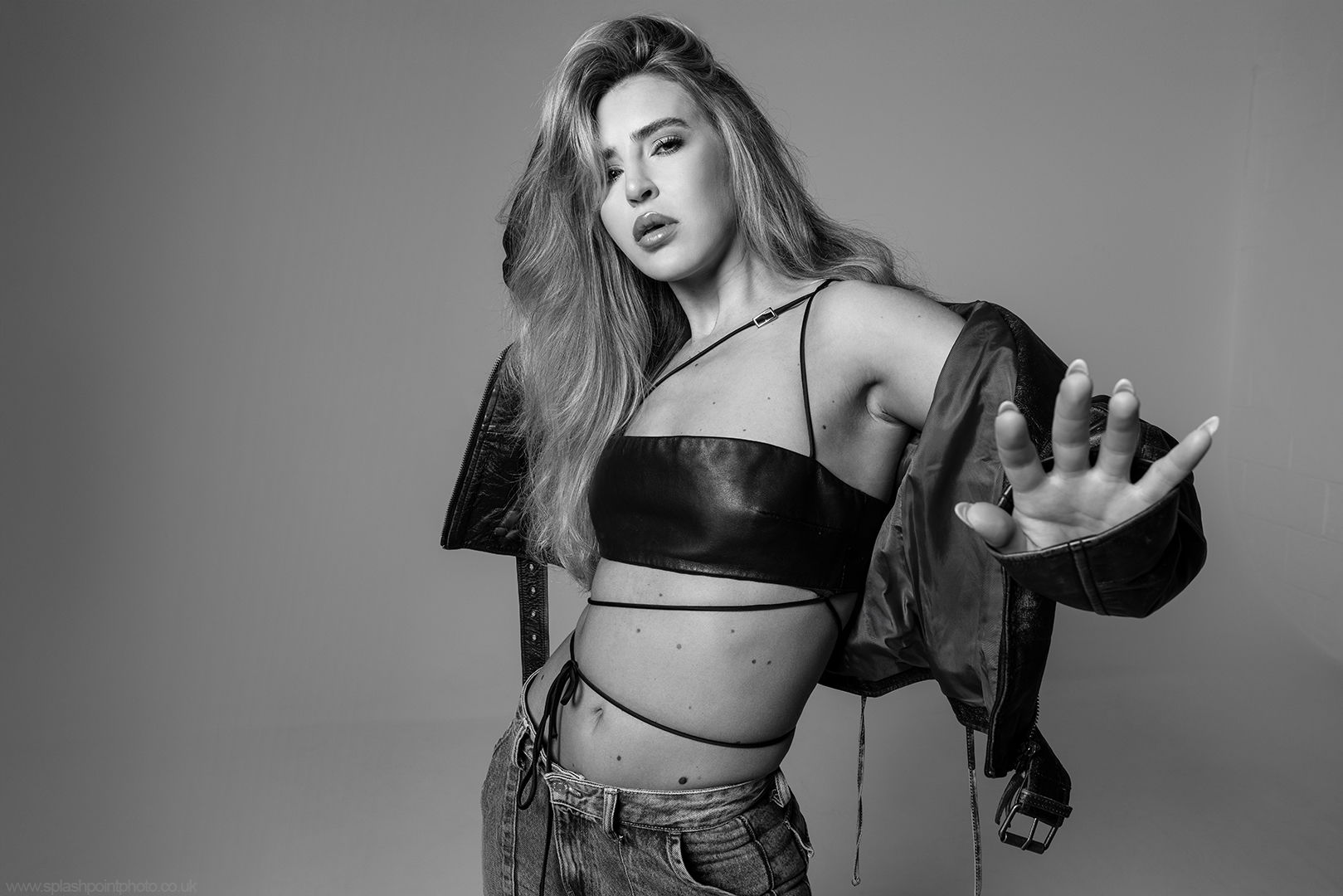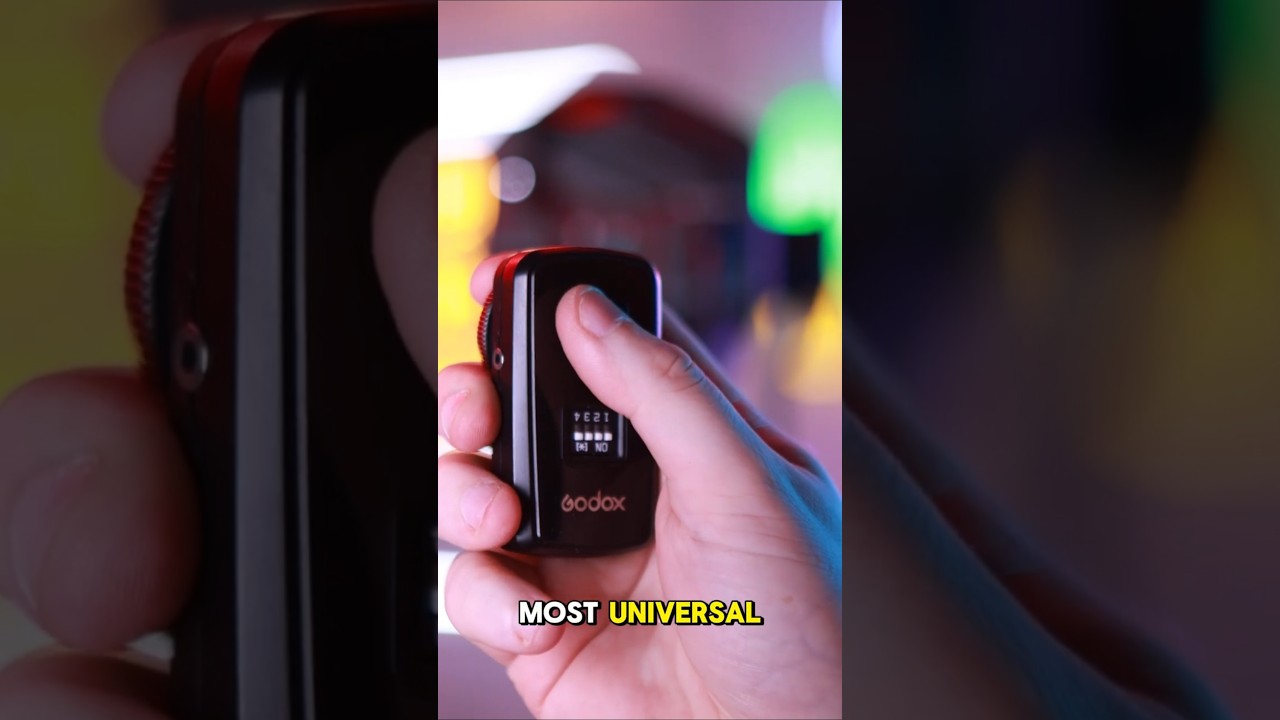What are triggers, receivers & transceivers, and why do you need to be in complete control of your lights!?
Firing a Studio Strobe – Triggers, Receivers & Manual Lighting.
There are several ways to trigger a strobe light and to sync it with your camera. The most common methods include using a wireless trigger and receiver (or transceivers), connecting them directly with a sync cable, or firing them via their built-in optical receiver. We’ll dive deeper into optical receivers in the next video, as they’re particularly useful for triggering multiple lights from a master flash, so keep an eye out for that, and also for a full jargon breakdown of what that means. It’s really worth knowing how the optical option works, as it can be a real lifesaver when everything else fails!

^ The most basic trigger and receiver set up ^
A sync cable does exactly what the name suggests - it syncs your camera to your strobe light. But it’s not quite as plug-and-play as it sounds. You’ll still need to make a basic setting adjustments for everything to work properly. Most prosumer studio strobes (which are the mid-range, non-fancy ones that don’t support HSS that as we discussed in the Broncolor blog), are limited when it comes to shutter speed. If you haven't seen that blog and read the link I suggested to, then let me break it down again. Typically, your average studio strobe will not sync reliably above 1/200. Some might require you to drop to 1/160, or even 1/125 to stay safe. In fact, I've spoke to a few photographers who have said that they had to shoot as slow as 1/60 on their brand of camera to avoid sync issues!
The key takeaway? Sync speed varies depending on your camera and the strobes. But no matter the gear, shutter speed is something you will always need to factor in with strobe lighting.
A photography strobe's pulse of light is so fast that it'll freeze basic movement, so unless you're using a shutter speed that is far too slow (which can be done creatively) and there is a load of ambient light that you're mixing in with the flash, then you shouldn't need more than 125, possibly even 60.. or lower. I typically just stick to 125 as a Canon user, as I find it's the most consistent. I'm unlikely to get any sync issues that may occasionally occur at 160, yet 125 is still pretty fast. If, however, that isn't working, and you find you're getting blurred images with strobes, then the chances are that you are underexposing your subject and not hitting them with enough clean light!
At the other end of things, a fast incorrect sync speed will manifest itself by black banding line(s) in your image; it may even look like vignetting and not be immediately obvious. That is your camera's shutter curtain obscuring some of the frame. As suggested, it happens when your sync speed is too high and usually above the 160/200/250+ thresholds. This catches everyone out when they first start shooting with studio flash, and not least if they have experience with speedlites, as they're typically a little faster in terms of sync speed and can often allow you to shoot up to 250th of a second. Of course, and as proved by said friend about coming down to 60, there are exceptions to every rule, but keeping your shutter between 125 and 160 with very little ambient light, will serve you just fine in the studio.

Pocket wizards used to be the expensive daddy and THE answer to transceivers back in my day
That said, these days, more people are getting used to fancier lighting gear that is becoming cheaper and more accessible as photography light technology rapidly advances. When paired with compatible triggers, these strobes can communicate with the camera much like speedlites do. They can effectively tell the camera what settings to use creatively.. and why would anyone want that? You should be in creative control! If you never learn to set up in manual, especially when it comes to studio photography, it'll give you a false sense of confidence and lead you down an easy path to complacency and a shallow understanding of both lighting and photography as a whole.
Over the past couple of years at the studio, I’ve noticed a lot of influencers, or for that matter, even 'photographers', who think they know what they're doing, but in reality, they know just enough with their own gear, which is what Paul Daniels would call “not a lot”. They get by by relying on their cameras to capture images while they focus mostly on angles and posing. But having a poor grasp of how a cameras and lighting actually work is not only ignorance or arrogance, it’s a setup for a rude awakening. If your aspirations take you in to real life scenarios where you are using other people's equipment, or even hired in equipment, then, putting it politely.. you're fucked! Everyone learns on the job in reality, but give your self a chance, you don't want to be punching way above your weight class, or you will get knocked the fuck out!
Many influencers and the like also struggle to visualize light they can’t actually see. They don't understand lighting patterns, and with so much free information these days, that's criminal. If you love portrait photography and have real ambition, you should choose to strive forward and push yourself to improve. You can never stop learning!

Now, whether understanding the creative content direction of knowing what people want in the modern day for socials, is more important, and thus replacing our dinosaur photographer minds of focusing our egos in to striving for technical excellence, well, that is an interesting debate. Why not both? What is for sure, however, is that they're never going to be in control, and thus they will be taking inconsistent photos with their lack of understanding, so they would crumble in a real life editorial scenario. You need to choose to power through the knowledge barrier and learn to earn it. Did you ever see how Brooklyn Beckham got laughed out of photography and became a chef? It's a big, scary world out there with a little knowledge, hell, it's a big scary world out there with a lot of knowledge, but you probably don't want to rely on getting lucky when haven't got a clue what you're doing.
I'd say that the thing I notice most about the industry, be it models or photographers, is people's lack of self awareness. However, naivety can actually be a reall powerful tool, especially when you’re new to any industry or hobby. It gives you the drive to push forward, fueled by the belief that you’re something better than you are. You haven't refinded you eyes yet, but this misplaced mindset helps you develop your own style without getting bogged down by trends or technical expectations. But trust me, to truly succeed and deliver consistent results, you need to be fully in control of your lights and camera. That means setting everything manually. White balance can be forgiven if you’re shooting in RAW, but that too can still psycologically impose itself on a shoot if the preview image is too warm/cold. Everything else should be dialed in by hand.
Now, here’s the point I was aiming for (and why I went on a bit of a philosophical tangent): many new studio strobes today come with built-in receivers. However, A) these are usually brand-specific, and B) they’re still very much a glimpse into the future rather than a universal standard across studios. So in reality, it doesn’t make a huge difference, except it can complicate things if you’re trying to use someone else’s strobes that aren’t compatible with yours. If you want to build credibility and land bigger, better jobs, it’s best to really know your craft. Or, if you choose ignorance, you better have a mix of confidence, naivety, or sheer boldness to talk your way through a plan B or C, and still somehow deliver what your client needs.
In conclusion to the above waffle, the point of studio photography is that you're fully in control, and despite the scaremongering, we're still a million miles away from Ai being able to create pictures of hands with an internet's worth of material to draw from, never mind a dumb computer chip in a camera/light trying to understand a creative scenario and then taking every photo with the perfect light and correct exposure. Hell, it'll shift your white balance from shot to shot in the same set as you change angle because your camera meter sees slightly different 'greys' each time, never mind it knowing what your brain is thinking and what your trying to achieve. Technological advances in photography make the tools easier to use, it helps them push past their previous limitations by making sync speeds more expansive, or by giving you way more wiggle room between your highlights and shadows (dynamic range) - stuff like this - what it can't do, is not be a tool and replace the human brain from manipulating it for better consistency.

My Broncolors use a similar trigger to this where the receivers are built in to the lights themselves.
Anyways! The obvious disadvantage of using a cable straight to your light, is of course being teathered and having less freedom. While these cables can be long, they often break easy too, or they fall out of your camera's sync port if you breathe on them just a little too heavy, so this is why triggers and receivers are the way to go. Cables are not a bad idea to have lying around 'just in case', as they take up such little room and weight, but equally, I could see many future cameras moving away from the ports used for these cables, so it wouldn't surprise me if the old skool PC port cables are completely dumped in the future.
To use a wireless trigger, you will also need a hotshoe on your camera. The hotshoe is the little ledge of electronic magic where you attach your speedlite, and in this case, it is where the trigger will go. 'Hot' basically means it's got flat metal connector plates that are ready to pair up with whatever you stick on there, and there needs to be a centre one to fire the most basic of triggers. Not every camera has a hotshoe however, and you can get something called a cold shoe that has not connectivity and just is a place to attach stuff. There's also ones with less connectivity, so that centre pin is a must. Hotshoes are typically reserved for the better hobbyist, prosumer and professional camera models. If you're not familiar with most of what I've just said, I urge you to do research your camera prior, because if you don't have a camera body with a hotshoe or a sync port, your ability to use strobes lighting is probably going to be null and void and limit what you can do in the studio
